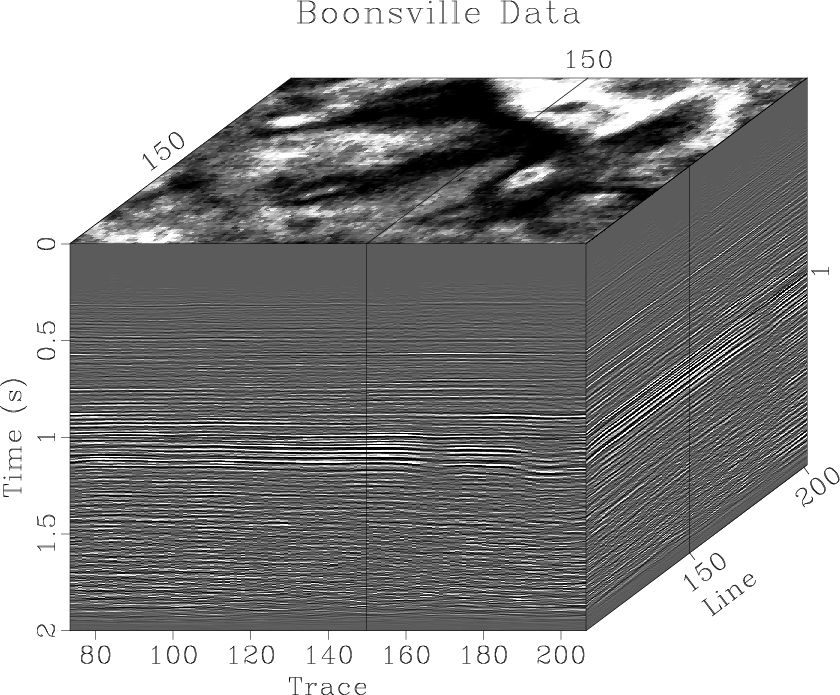sfintbin uses trace headers to arrange input traces in a 3-D cube.
The input to this program typically comes from reading a SEGY file with sfsegyread.
The following example from tccs/phase/boon3 shows a typical output:

sfintbin takes as an input a 2-D trace file and its corresponding trace header file (specified by head=). The header file is assumed to contain integer values. The output 3-D cube is generated according to trace header keys, which can be specified by name (xk=, yk=) or by number (xkey=, ykey=). In the example above, the parameters are xk=cdp and yk=fldr. If you are unsure which keys to use, try sfheaderattr. The range of values can be controlled with xmin=, xmax=, ymin=, ymax=.
sfintbin performs a very simple operation: it goes through the input file and assigns traces to the output according to their header keys. If there are several traces with the same x and y keys, the last one survives. If there are bins in the output with no input, they are filled with zeros. You can output the mask of empty traces using mask=. You can output the mapping of traces using map=. The latter is particularly useful for the inverse operation (mapping from 3-D back to 2-D), which can be performed with inv=y.
For an absent trace header key, which corresponds to a trace number in a gather, you can set xkey= to a negative number. For this to work, the input needs to be sorted in the corresponding gathers, which can be accomplished with sfheadersort.
To produce a 4-D output (for example, a set of gathers in 3-D), try sfintbin3.
codemore code
~~~~
more code